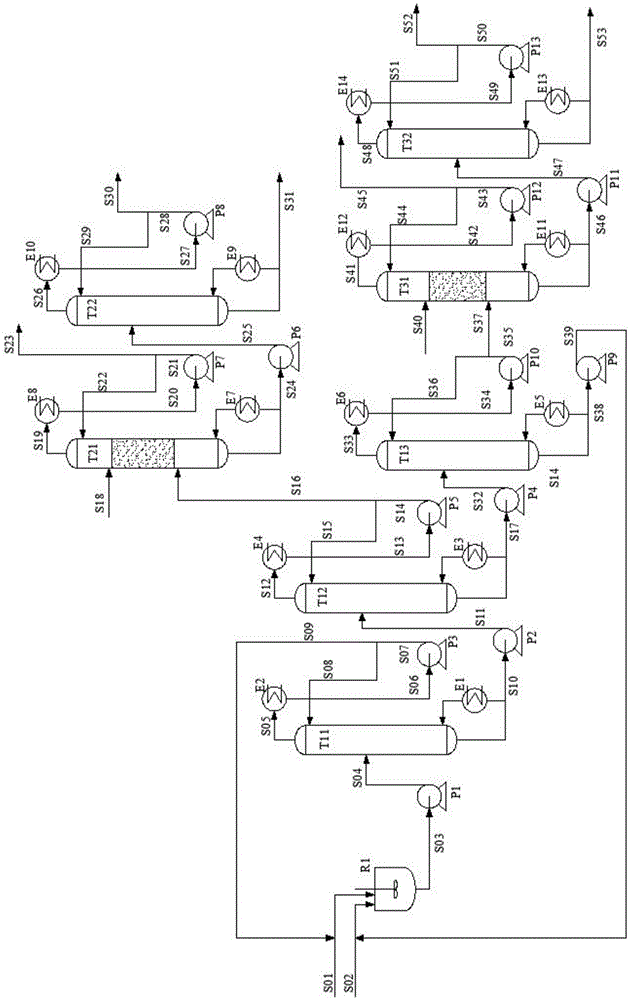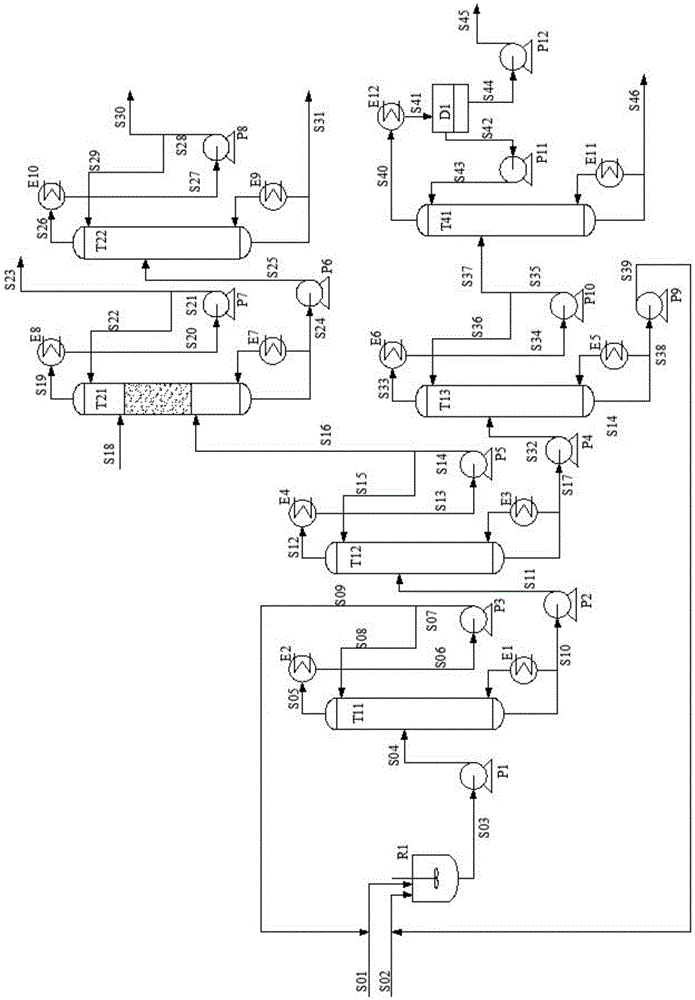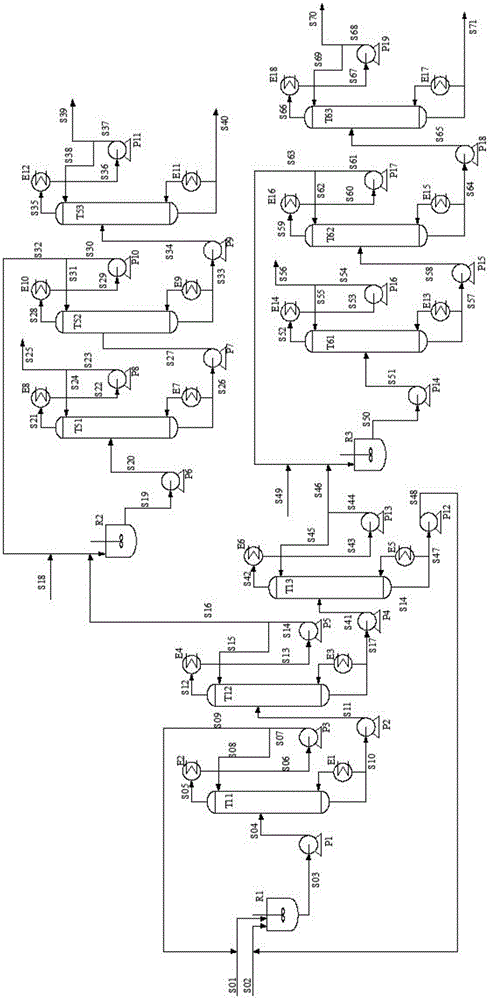Method, process and apparatus for separation of ethylene glycol and 1,2-butanediol
A technology of ethylene glycol and butanediol, applied in chemical instruments and methods, separation/purification of hydroxyl compounds, preparation of organic compounds, etc., can solve problems such as affecting the yield of ethylene glycol, unfavorable energy saving, and poor recovery. , to achieve the effect of high quality recycled products, saving equipment investment and reducing operating costs
- Summary
- Abstract
- Description
- Claims
- Application Information
AI Technical Summary
Problems solved by technology
Method used
Image
Examples
Embodiment 1
[0080] The method of the present invention is used for the reaction separation process of ethylene glycol and 1,2-butanediol mixture, such as figure 1As shown, including acetal reactor (R1), aldehyde / ketone recovery column (T11), ethylene glycol acetal / ketone product separation column (T12), butanediol acetal / ketone product separation column (T13), acetal Aldehyde / ketone hydrolysis distillation column (T21, T31), ethylene glycol purification column (T22), 1,2-butanediol purification column (T32), condenser, reboiler, pump and related feed lines and Connect the lines to the above equipment. The diol mixed raw material S02 (the molar ratio of ethylene glycol and 1,2-butanediol: 0.55:0.45) and the reactant acetaldehyde S01 are added to the fully mixed tank reactor (R1). The molar ratio of the total amount of materials was 1, the reaction was carried out at 60° C. and an absolute pressure of 1.5 atm, the reaction residence time was controlled to be 40 minutes, and a macroporous ...
Embodiment 2
[0083] The method of the present invention is used for ethylene glycol and 1,2-butanediol mixture reactive distillation separation process, such as figure 2 As shown, for the improved process of Example 1, it is considered to separate the acetal product of 1,2-butanediol as a product without hydrolysis, including reactor (R1), aldehyde / ketone recovery column (T11), ethyl acetate Glycol acetal / ketone product separation tower (T12), butanediol acetal / ketone product separation tower (T13), ethylene glycol acetal / ketone hydrolysis distillation tower (T21), ethylene glycol refining tower (T22) , 1,2-Butanediol acetal product refining column (T41), phase separator (D1), condenser, reboiler, pump and related feed pipelines and pipelines connecting the above equipment. The other operations of the second embodiment are the same as those of the first embodiment. The overhead draw stream S37 of the butanediol acetal product separation column (T13) enters the 1,2-butanediol acetal produc...
Embodiment 3
[0086] The method of the present invention is used for ethylene glycol and 1,2-butanediol mixture reactive distillation separation process, such as image 3 As shown, it is an improved process of Example 1, and the acetal / ketone product considers the separation method after hydrolysis, and other operations in Example 3 are the same as those in Example 1. Reactors R2 and R3 are both carried out at 75°C and 2 atm absolute pressure, the reaction residence time is controlled to 40 minutes, and a basic ion resin catalyst is used; after hydrolysis, the total number of theoretical plates in the aldehyde recovery tower (T51) is 13, and the operating absolute pressure is 1.3 atm , the reflux ratio is 5; the total number of theoretical plates of the aldehyde recovery tower (T61) after hydrolysis is 13, the absolute operating pressure is 1.3 atm, and the reflux ratio is 5; the total number of theoretical plates of the unhydrolyzed acetal recovery column (T52) is 12, and the absolute opera...
PUM
 Login to View More
Login to View More Abstract
Description
Claims
Application Information
 Login to View More
Login to View More - R&D
- Intellectual Property
- Life Sciences
- Materials
- Tech Scout
- Unparalleled Data Quality
- Higher Quality Content
- 60% Fewer Hallucinations
Browse by: Latest US Patents, China's latest patents, Technical Efficacy Thesaurus, Application Domain, Technology Topic, Popular Technical Reports.
© 2025 PatSnap. All rights reserved.Legal|Privacy policy|Modern Slavery Act Transparency Statement|Sitemap|About US| Contact US: help@patsnap.com



